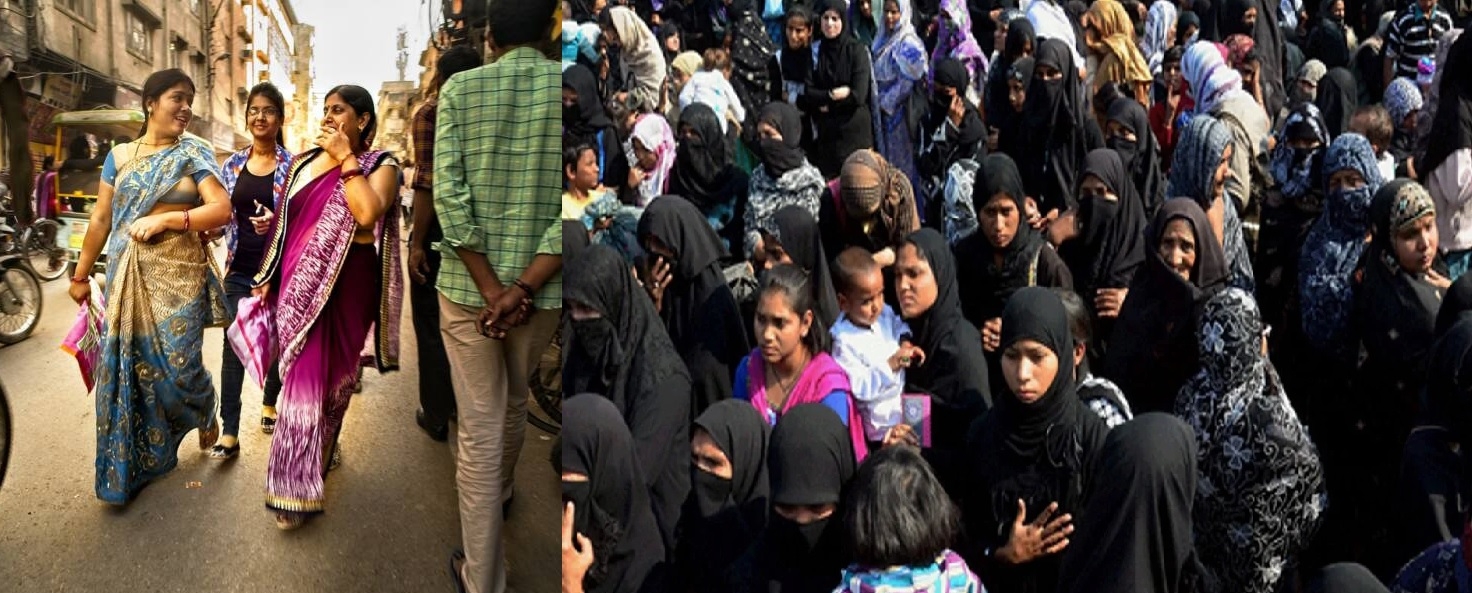India: Between 1950 & 2015 Hindu population by 7.82%,that of Muslims by 43.15%
| Date :10-May-2024 |

NEW DELHI :
THE share of the Hindu population decreased by 7.82 per
cent between 1950 and 2015 in
India, while that of Muslims
increased by 43.15 per cent,
suggesting that there is a conducive environment in the
country to foster diversity, said
a recent working paper by the
Economic Advisory Council to
the Prime Minister (EAC-PM).
The paper titled ‘Share of
Religious Minorities: A CrossCountry Analysis (1950-2015)’
further said, the share of Jains
in the population of India
decreased from 0.45 per cent
in 1950 to 0.36 per cent in 2015.
“The share of the majority
Hindu population decreased
by 7.82 per cent between 1950
and 2015 (from 84.68 per cent
to 78.06 per cent). The share of
Muslim population in 1950 was
9.84 per cent and increased to
14.09 per cent in 2015 -- a 43.15
per cent increase in their share,”
said the paper prepared by a
team led by Shamika Ravi,
member, EAC-PM.
According to the paper, the
share of Christian population
rose from 2.24 per cent to 2.36
per cent -- an increase of 5.38
per cent between 1950 and
2015.
While the share of Sikh population increased from 1.24 percent in 1950 to 1.85 per cent in2015 - a 6.58 per cent rise intheir share, the share of theParsi population in India witnessed a stark 85 per centdecline, reducing from 0.03 percent share in 1950 to 0.004 percent in 2015. Even the share of
the Buddhist population witnessed a noticeable increasefrom 0.05 per cent in 1950 to0.81 per cent.
The data indicates that“thereis a conducive environment tofoster diversity in the society,”the paper said, adding that it
is not possible to promote better life outcomes for the disadvantaged sections of society without providing a nurturing environment and societal
support through a bottom-upapproach.
The paper noted that adecrease in the share of themajority population and a consequent increase in the shareof minorities suggests that thenet result of all policy actions,
political decisions and societal processes is to provide aconducive environment forincreasing diversity in society.
The report pointed out thatin keeping with the global
trends of declining majority,
India too has witnessed a reduction in the share of the
majority religious denomination by 7.82 per cent.
“This is particularly
remarkable given the wider
context within the South
Asian neighbourhood where
the share of the majority religious denomination has
increased and minority populations have shrunk alarmingly across countries like
Bangladesh, Pakistan, Sri
Lanka, Bhutan and
Afghanistan,” the paper said.
The paper said it is not surprising, therefore, minority
populations from across the
neighbourhood come to
India during times of duress.
It pointed out that all the
Muslim majority countries
witnessed an increase in the
share of the majority religious denomination except
Maldives, where the share of
the majority group (Shafi’i
Sunnis) declined by 1.47 per
cent. In Bangladesh, there
was an 18 per cent increase
in the share of the majority
religious group which is the
largest such increase in the
Indian subcontinent.
Pakistan witnessed an
increase of 3.75 per cent in
the share of the majority religious denomination (Hanafi
Muslim) and a 10 per cent
increase in the share of total
Muslim population despite
the creation of Bangladesh in
1971.
According to the report,
among non-Muslim majority countries, Myanmar, India
and Nepal saw a decline in
the share of the majority religious denomination.
The paper noted that the
year 1950 is important as a
baseline year for two major
reasons.
This was around the time
that the international human
rights framework under the
aegis of the newly created
United Nations began to take
shape with minority rights
and state responsibility for
protection of minorities
being mainstreamed in international law, the paper said.
The paper is a detailed
cross-country descriptive
analysis of the status of
minorities around the world
measured in terms of their
changing share in a country’s population over 65 years
between 1950 and 2015.
For the 167 countries
analysed, the average value
for the share of the majority
religious denomination in
the baseline year of 1950 is
75 per cent, while the mean
of the distribution capturing
the change in majority religious denomination
between 1950 and 2015 is
21.9.